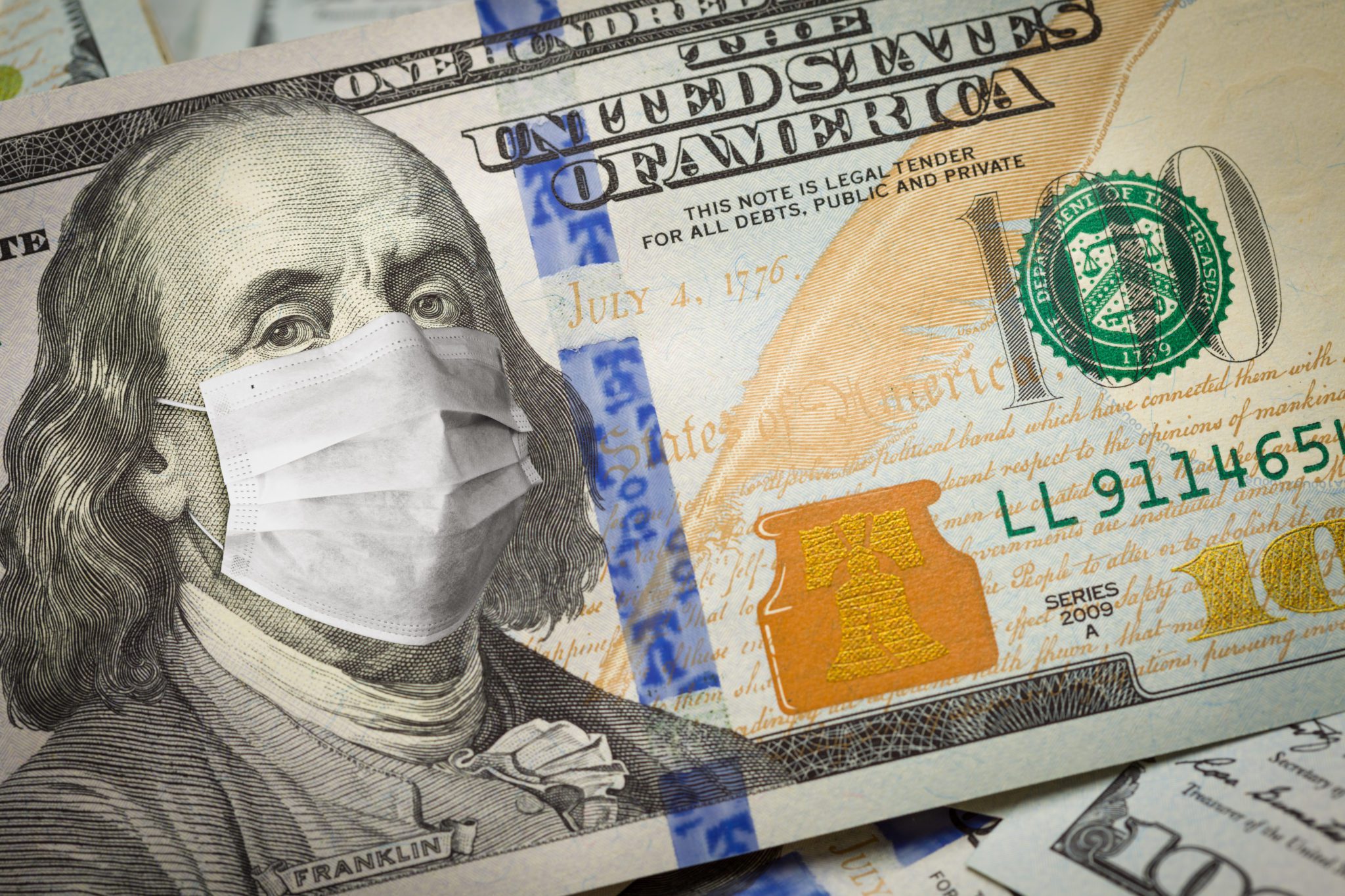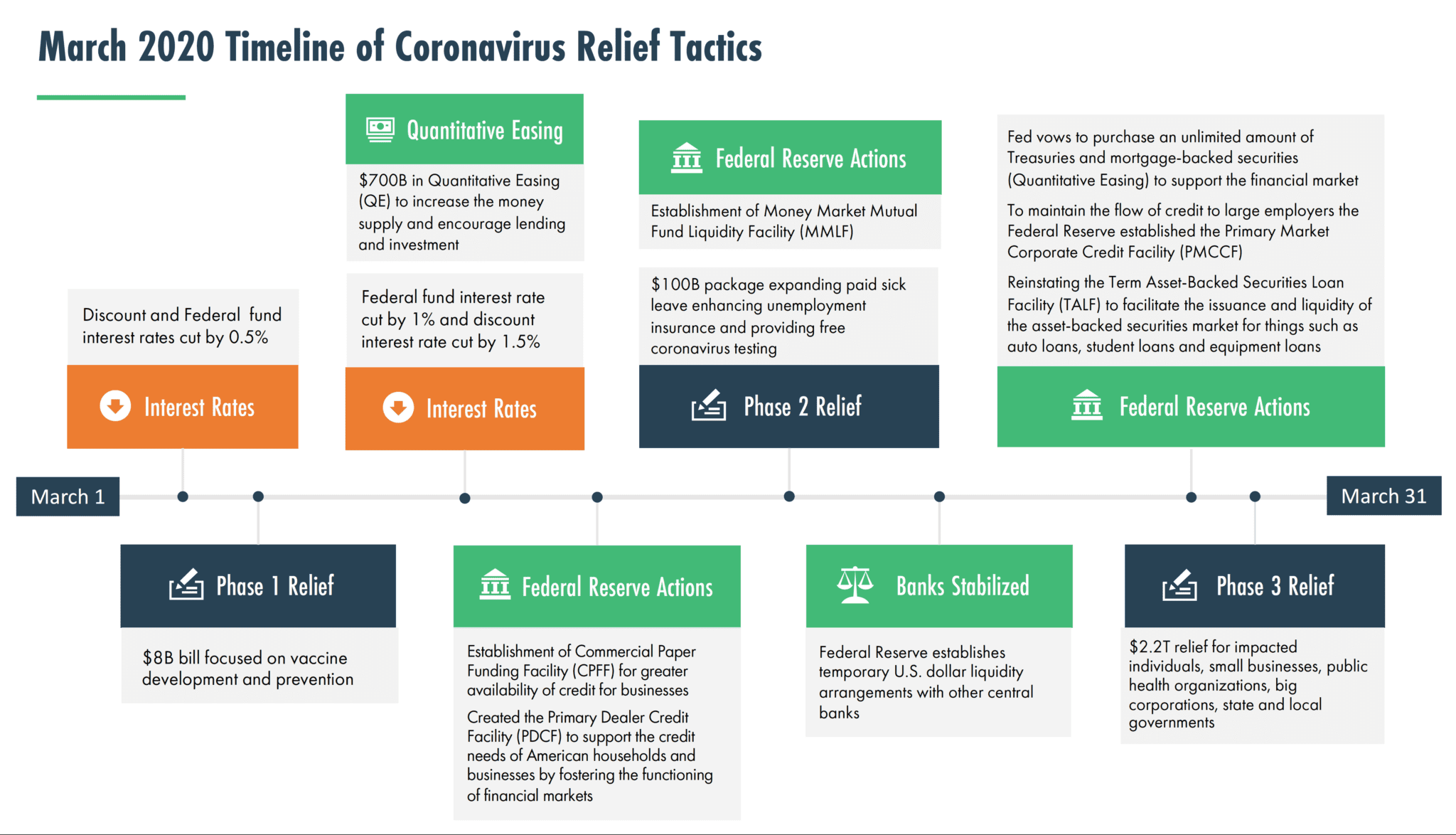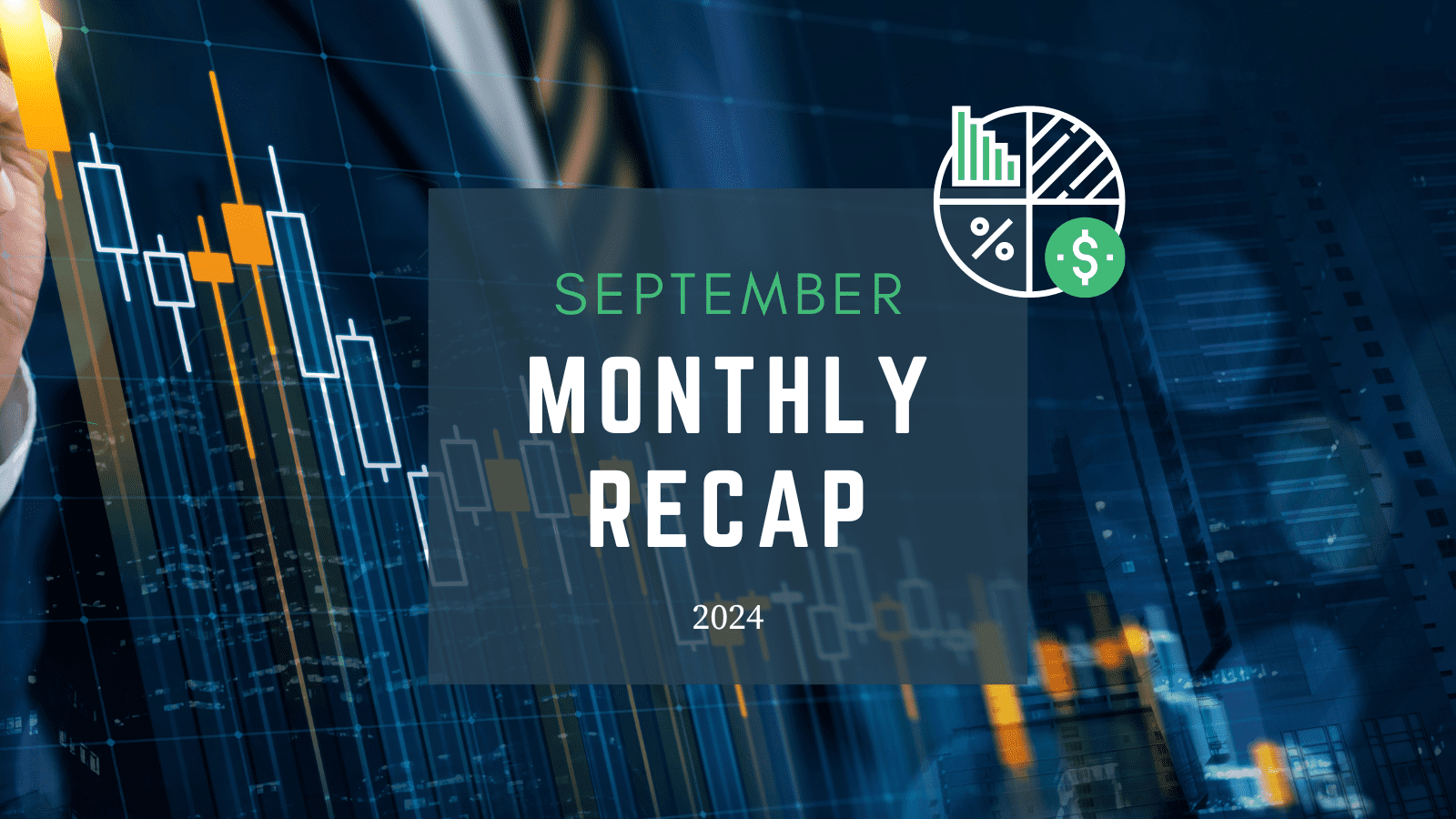With the passage of the federal government’s latest stimulus package for the U.S. economy, we see signs that market stabilization may be on the horizon. To date, the federal government’s stimuli, both monetary and fiscal, appear to have buoyed markets over recent trading sessions.
The month started with the Fed decreasing interest rates on both March 3 and 15 and aggressively pursuing policies to provide liquidity to the markets. These moves lowered borrowing costs and stabilized short-term funding markets, vital for the health of the economy.
Then, on March 6, the first of three stimulus packages rolled out. Phase 1, the $8.3 billion package, has the goal of helping develop new coronavirus treatments. It’s also intended to assist in implementing public health measures to try to slow and prevent the spread of the disease, with $4 billion funding more coronavirus testing.
Phase 1 also provided an additional $1 billion in funding to the Small Business Association (SBA) for loan subsidies to small businesses. Part of this package also included aid abroad, staying consistent with the U.S. position of helping other nations in need.
The Phase 2 package of $100 billion rolled out on March 18 with a wider variety of economic assistance to those hit hard by the pandemic. Highlights include:
- Paid sick leave for two weeks for businesses that have fewer than 500 employees.
- Boosts to unemployment insurance benefits.
- More money for food assistance programs affected by the pandemic.
- Free testing for coronavirus, regardless of whether a patient has health insurance coverage.
The Coronavirus Aid Relief and Economic Security (CARES) Act is Phase 3 and the most largely funded by far with $2 trillion. The day before the act passed Senate Majority Leader Mitch McConnell was quoted by NPR as saying, “No economic policy can fully end the hardship so long as the public health requires that we put so much of our commerce on ice. This isn’t even a stimulus package. It is emergency relief.”
Highlights of the CARES Act released on March 27 include:
- One-time direct payments of up to $1,200 for individuals and $2,400 for couples, with $500 added for every child. The full benefit begins to phase out above $75,000 in income for individuals and $150,000 for couples.
- Delayed payment of employer portion of Social Security Tax, requiring half of the deferred tax to be paid by the end of 2021 and the other half by the end of 2022.
- A payroll tax credit to businesses for retaining employees.
- Providing $16 billion for the strategic national stockpile of pharmaceutical and medical supplies.
- Providing $17 billion in loans and loan guarantees for unspecified “businesses critical to maintaining national security.”
- Creating a $500 billion pool of taxpayer money to make loans, loan guarantees or investments to or in businesses, states and municipalities damaged by the crisis.
- Giving $350 billion in loans for small businesses to cover salary, wages and benefits in addition to the $1 billion for given in Phase 1.
- Giving $25 billion in grants to airlines and $4 billion to cargo carriers to be used exclusively to pay employee wages, salaries and benefits. Set aside another $25 billion and $4 billion, respectively, for loans and loan guarantees.
- Boosting unemployment insurance, adding $600 per week for up to four months on top of what beneficiaries normally receive from states. Expand eligibility to self-employed people and independent contractors.
- Putting $117 billion into hospitals and veterans’ health care.
Taking swift action, President Trump signed the CARES Act just 11 weeks after the first reported death from coronavirus in China. In contrast, 2008’s American Recovery and Reinvestment Act did not go into effect until 80 weeks after the crisis began, as reported by the Wall Street Journal on March 27, 2020 in the article, “How Fast the Economy Crashed and Washington Responded – in Charts.”
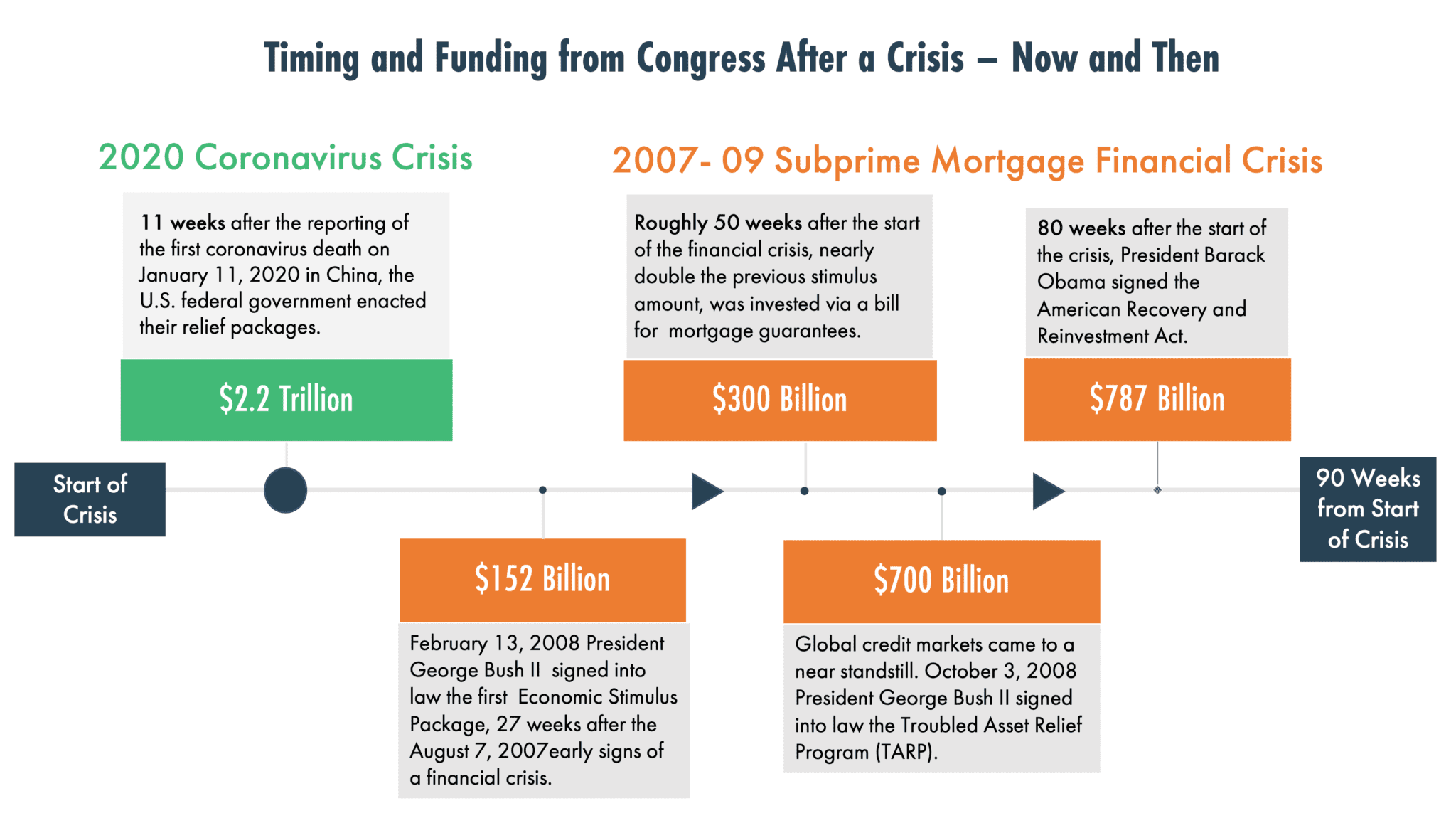
As swiftly as government programs have rolled out, so has the number of coronavirus cases in the U.S. Keeping individuals distanced to prevent the spread of the virus and the resulting business interruptions by nature creates economic drag.

Market volatility remains elevated but has moderated considerably from recent mid-March highs, as shown in the chart below. The volatility curve of the markets appears to be trending in the same direction of the coronavirus spread in the U.S.
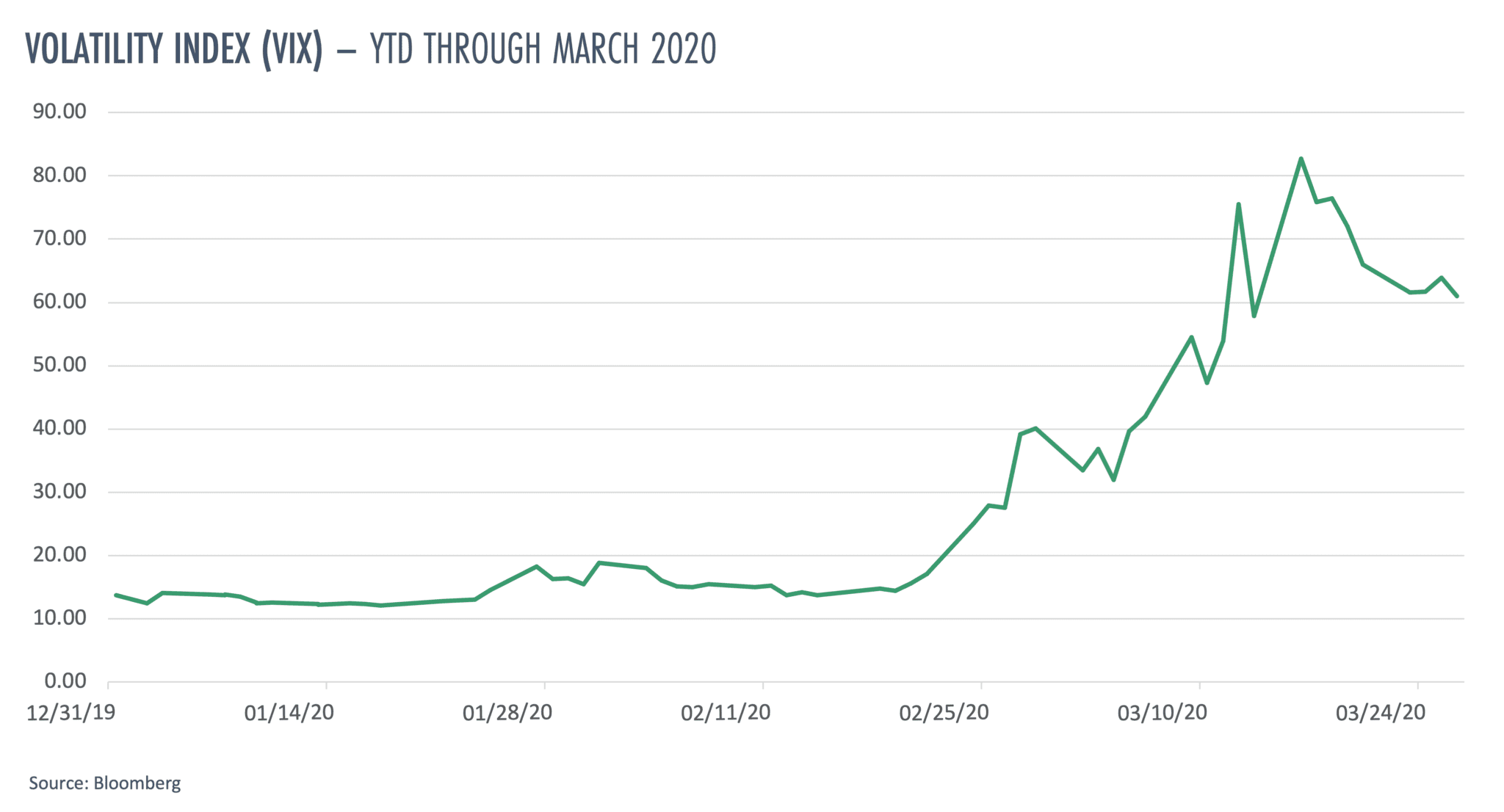
While “March’s Market Madness” this year saw some tough losses, it also had record gains. At Moneta, your financial advisors remain optimistic about the market’s resilience. Most recently, the S&P 500 saw a 17.6% gain over a three-day period (highlighted in yellow on the chart below) marking it the best three-day run for the index since 1933, according to Howard Silverblatt, senior index analyst for S&P Dow Jones Indices. In addition, four of the S&P 500’s top 20 single-day returns since 1950 occurred in March 2020. These statistics underscore our basic investing tenant that timing the market does not drive investing success; ‘time in the market’ is far more important, as missing a few top days can significantly diminish longer-term returns.
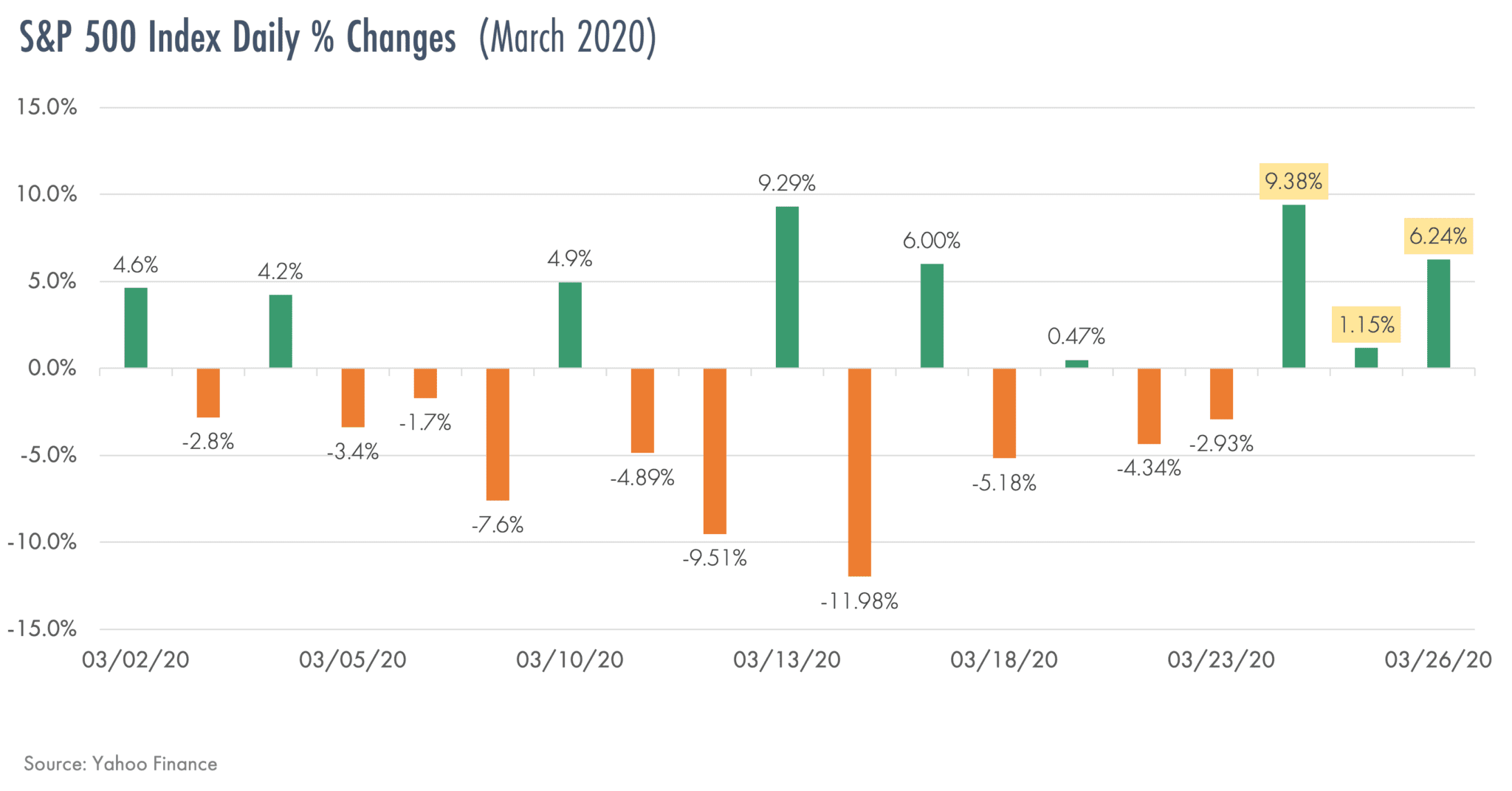
As we practice social distancing to flatten the coronavirus curve, we remain steadfast in our investment plans. This will be an event with a beginning, a middle and an end. We believe we are in the middle of it all right now. As always, during these challenging times, know that your Moneta team is here for you however you need us.
© 2020 Moneta Group Investment Advisors, LLC. All rights reserved. These materials were prepared for informational purposes only based on materials deemed reliable, but the accuracy of which has not been verified. This is not an offer to sell or buy securities. You should consult with an appropriately credentialed professional before making any financial, investment, tax or legal decision. Past performance is not indicative of future returns. These materials do not take into consideration your personal circumstances, financial or otherwise.
